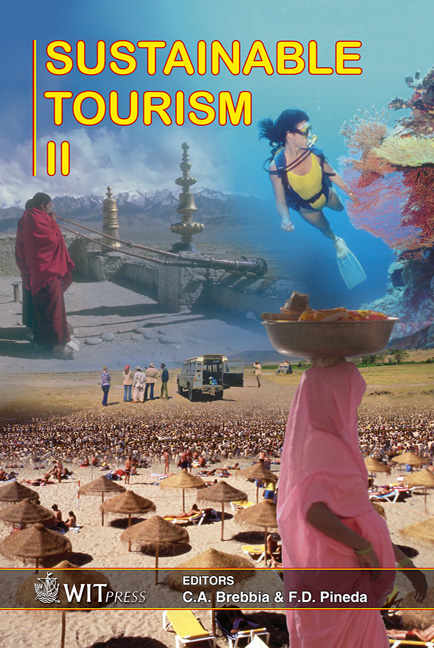The Social And Cultural Impact Of Tourism Development On World Heritage Sites: A Case Of The Old Town Of Lijiang, China, 2000–2004
Price
Free (open access)
Transaction
Volume
97
Pages
10
Published
2006
Size
1151 kb
Paper DOI
10.2495/ST060111
Copyright
WIT Press
Author(s)
T. Yamamura, T. X. Zhang & Y. Fujiki
Abstract
The objective of this paper is to clarify the spatial and social impact on a city caused by its being registered as a World Heritage Site and its transformation into a tourist destination. As part of an investigation of the problems related to rapid development of tourism and its pressures on World Heritage Sites, this study attempted to clarify the issues facing the tourist industry at the Old Town of Lijiang, Yunnan Province, China, a World Heritage Site, by focusing on the tourist shops there and comparing these data as of 2004 with previous data as of 2000. The ways in which both the existing indigenous society (a minority known as the Naxis) and the majority peoples, temporary residents, engage in commercial tourism-related activities were examined. As a result, it was found that, in recent years, the usage of historic buildings has drastically changed. At present, over 90% of shops are tourist-oriented souvenir shops and restaurants. Furthermore, over 50% of shopkeepers are temporary residents, mainly Han Chinese, with a large majority renting rooms from indigenous owners. These findings suggest that the location of the residences of the indigenous minority and its culture are rapidly changing as tourism develops. Keywords: indigenous society, World Heritage Site, Lijiang, China, social impact of tourism, migration of population.
Keywords
indigenous society, World Heritage Site, Lijiang, China, socialimpact of tourism, migration of population.





